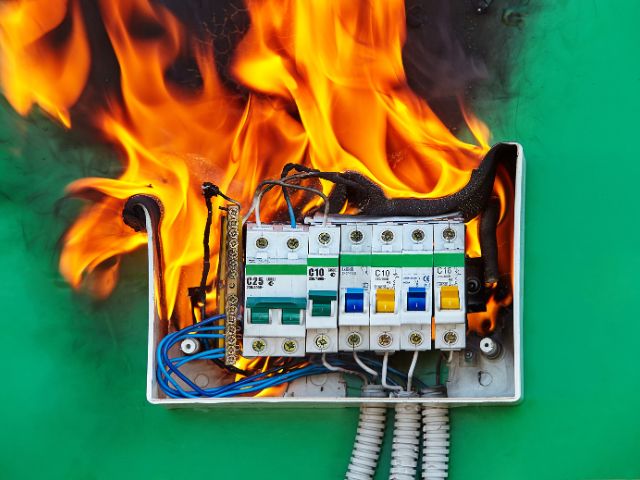

Amazon.com Inc.
said Wednesday that it would split its stock 20-for-1. Stock splits change the stock price and not much else, but they can be confusing anyway.
Stock splits rarely happen these days. Once nearly a given when shares topped $100 or so, stock splits have all but disappeared from the corporate playbook. Stock splits by companies in the S&P 500 faded from prominence after the dot-com bust in 2000, while those by companies in the Dow Jones Industrial Average are even less frequent.
The
split must be approved by shareholders—largely a formality-—and trading at the split-adjusted price is expected to begin on June 6.
The total value of an investor’s Amazon holding won’t change. Shareholders as of May 27 will get 19 new shares for each share they own; after the split takes effect the market price for each share will be one-twentieth of the presplit price. Amazon shares are roughly $2,800 each now; at that level, shares would be around $140 each after the split.
Each company shareholder at the close of business on the day the stock split goes into effect will receive additional shares for every share they hold. If a company announces a 4-for-1 stock split, the shareholder will get three additional shares. The price of the original share will be divided by four, so that a share trading at $400 would trade at $100 after the split.
Stock splits help entice investors who might be put off by a high share price. But that might be less relevant now than in the past. Brokerages such as
Charles Schwab Corp.
give clients the option of buying a fraction of a share for as little as $5, opening up a range of pricey stocks to mom-and-pop investors.
It depends on what the board decides. If the company holds its dividend steady, its next payout would split along the same lines as the stock—a dividend of $1 after a 4-for-1 stock split would be 25 cents. Amazon doesn’t pay a dividend.
What happens to options bets?
Options contracts owned at the time of the split are recalculated through a process known as “being made whole.” The Options Clearing Corp. has rules and procedures in place to modify contracts so that the holder isn’t affected by the split. The contract is adjusted to reflect the new price and number of shares, but its value remains the same.
In a 4-for-1 split, a call options contract that covered 100 shares with a strike price of $100 each would cover 400 shares with a strike price of $25.
What happens to fractional shares of companies that split?
Again using the example of a 4-for-1 split, investors who hold less than one share ahead of the split will receive three additional fractional share equivalents. An investor holding half a share before the split will end up holding two shares after the split. An investor holding a quarter of a presplit share will end up with one share afterward. Anyone with less than a quarter share will hold a fractional share following the split.
What does a stock split mean for the company?
Other than a lower stock price and more shares outstanding, mostly nothing. Splits don’t affect a company’s value, although they have a history of generating a short-term pop in a company’s stock price.
Stocks in the S&P 500 tend to rise 5% in the year following share splits, including 2.5% immediately following the announcement, according to research from
Nasdaq Inc.
on splits between 2012 and 2018.
In most cases, stock splits have no impact on the broader stock market. The S&P 500, the index most closely followed by many investors and portfolio managers, is weighted by firms’ market value, so a split has no impact. The Dow Jones Industrial Average is a different story. A stock split won’t shave any points from the blue-chip index, but it will make a splitting stock less influential in it.
The Dow is a price-weighted index, meaning the higher the share price, the bigger the influence that stock has over the index’s daily price swings. In addition to causing the stock to have a smaller role in the Dow’s moves, the change could affect the performance gap between the 30-stock index and the broader S&P 500.
Apple Inc.
and
Tesla Inc.
split their stocks in 2020, but splits don’t seem to be in vogue. Google parent
Alphabet Inc.
unveiled plans for a 20-for-1 split last month.
And several stocks that haven’t split in recent years have continued to rally.
Class A shares trade above $485,000. Another class it created in 1996 to help encourage more participation by individual investors trades above $300 and is in the S&P 500. Berkshire split shares of that second class in 2010.
Companies were more likely to split their shares in the past in part because of the mechanics of trading. Trading wasn’t powered by fast-moving digital systems and was costlier to small investors. Buyers got better prices if they were willing to buy round lots of 100 shares rather than so-called odd lots, which carried steeper commissions. A share split helped keep stock prices in check for investors who were willing to buy blocks of 100 shares at a time.
Commissions largely don’t exist anymore at most do-it-yourself brokerages, such as Schwab and TD Ameritrade Holding Corp., eliminating that concern. Still, most institutional investors continue to prefer blocks of shares since the price often quoted on an exchange is for a round lot, according to
Phil Mackintosh,
Nasdaq’s chief economist.
They have three options: paying up; buying shares of other firms that trade for less; or purchasing a fraction of a share, an alternative recently offered by some retail brokerages.
But fractional shares come with a caveat: Buyers don’t get the actual share. Instead, the brokerage does, and investors have a right to whatever portion they agree to buy—which means proportional dividend and voting rights, among other things.
Write to Michael Wursthorn at Michael.Wursthorn@wsj.com
Copyright ©2022 Dow Jones & Company, Inc. All Rights Reserved. 87990cbe856818d5eddac44c7b1cdeb8
24World Media does not take any responsibility of the information you see on this page. The content this page contains is from independent third-party content provider. If you have any concerns regarding the content, please free to write us here: contact@24worldmedia.com

Common Mistakes When Using Athletic Field Tarps

High-Performance Diesel Truck Upgrades You Should Consider

Warehouse Optimization Tips To Improve Performance

Fire Hazards in Daily Life: The Most Common Ignition Sources

Yellowstone’s Wolves: A Debate Over Their Role in the Park’s Ecosystem

Earth Day 2024: A Look at 3 Places Adapting Quickly to Fight Climate Change

Millions of Girls in Africa Will Miss HPV Shots After Merck Production Problem

This Lava Tube in Saudi Arabia Has Been a Human Refuge for 7,000 Years

Four Wild Ways to Save the Koala (That Just Might Work)

National Academy Asks Court to Strip Sackler Name From Endowment

Ways Industrial Copper Helps Energy Production

The Ins and Out of Industrial Conveyor Belts